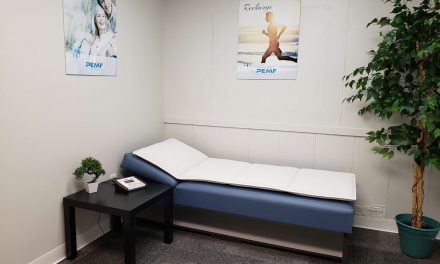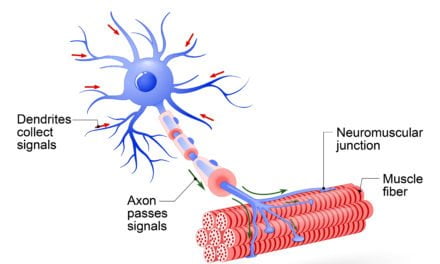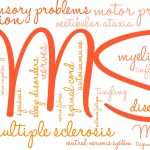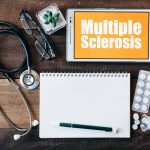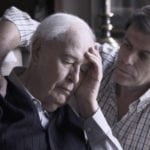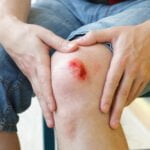
The PTSD Problem and the PEMF Therapy Solution

Have you heard that many combat veterans suffer from a PTSD problem?
While it’s a stigma that is so regularly attached to veterans and active military, it is important to keep in mind that it isn’t just our veterans that suffer from it.
Thousands struggle with PTSD every day.
Those who struggle have their own unique story and will also have a unique journey.
Additionally, each individual and their loved ones have most likely chosen a therapy to start with that they felt comfortable with.
Just as there is no right or wrong answer for individuals when it comes to treating depression or generalized anxiety, there is no right or wrong answer when it comes to treating PTSD.
These two conditions are categorized as “mental health disorders”, but make no mistake that PTSD is not the same as depression or anxiety.
Do you know the difference between the two?
This article is dedicated to today to those who suffer from PTSD, whether combat veterans, active military, or the mother and father who lost their child in a traumatic event.
You may be reading this, and yet you witnessed something horrific that has changed your life.
Perhaps you’ve been searching for a therapy to help you move on with life, but you’ve come up short with what you’ve tried so far.
Today, this article will define exactly what PTSD is, and you’ll read the statistics on this disorder so that you can fully grasp how problematic it really is within the United States.
If you are reading this and your loved one is suffering from this disorder, please read this article all the way through to the end, and you’ll get some very important information at the end.
Defining the PTSD Problem
Putting thousands of patients in a box that all suffer from the same disorder is an ineffective way to approach helping them get what they need.
This is ONE very good reason that we face a PTSD problem.
It seems that we put it on veterans like a badge, and yet we ignore the fact that there are numerous individuals that struggle with this disorder.
We take the label of PTSD and we automatically associate it with those who have come home from Iraq and Afghanistan.
While this may be true, and there is certainly an uptick in cases since this war began, PTSD is no respecter of persons.
What is this disorder?
PTSD, or Posttraumatic stress disorder is a psychiatric disorder that can occur in people who have experienced or witnessed a traumatic event such as a natural disaster, a serious accident, a terrorist act, war/combat, rape, or other violent personal assault.
You may have heard terms like “shell shocked”, often referring to those who have been to war.
Those who have been impacted may have flashbacks about the events, or they may even act as though they are reliving the events throughout the day.
Here are some statistics we have right now regarding PTSD and how it has impacted our combat veterans and active military.
- 1 out of 3 combat veterans returning home has been diagnosed with PTSD
- Those who seek help account for about 40% or fewer veterans/soldiers.
- 245 soldiers took their own lives back in 2009
These numbers are disturbing ,and yet is has not been enough to boost awareness among family members of combat veterans.
It is often too late by the time family members and friends realize what it is happening. How common is this now?
The last numbers reported, showed that there are on average 22 soldiers per day taking their lives.
This should not be happening, and there must be a better way to address the PTSD problem before anymore lives are lost.
There are many reasons that veterans and active military face these challenges including homelessness upon return, and difficult in finding work once they have been discharged.
When the rate of suicides surpasses the number of combat fatalities we have an even bigger issue than we imagined, and the barrage of medications dispensed and meetings with psychiatrists and counselors isn’t effective.
Could PEMF therapy be the solution that these men and women need?
Let’s take a look at what we do know about PEMF therapy right now, and how it affects the brain.
Traumatic brain injury, also known as TBI, is a common injury among combat veterans.
Football players and those who work in high-risk jobs with heavy equipment are also at risk.
Events like car accidents may also cause traumatic brain injury, often through severe concussions.
While this medical condition is complex, the process by which the symptoms of TBI are reduced, shed light on how effective PEMF therapy could be for PTSD.
There are two processes that are to be examined and studied further. This is:
- How PEMF therapy has been able to reduce depression.
- How PEMF therapy has been able to reduce symptoms of TBI.
If we take a look at how these processes occur in the brain, and how PEMF therapy can aid in reducing the symptoms of both, we can easily see the promise behind PEMF therapy and how it may heal PTSD.
How PEMF Therapy Can Impact the PTSD Problem
PEMF therapy is often referred to as “gentle pulses”, but in order to truly understand the impact they can have on the brain and the body, you must understand how this therapy works on the inside.
During a PEMF therapy session, little microcurrents flow through the body, and research has shown that specific currents at various frequencies and intensities will elicit a particular response.
This is great news for those who are seeking a more natural alternative.
The body already has electromagnetic fields of its own, all responding differently in various organs and tissues.
This is why modern medical imaging is possible, and can give us clues into what may be happening inside the body.
CT scan machines and MRI machines both have the ability to get images of the body.
Your body works cooperatively due to the trace amounts of magnetite in the body, allowing the electromagnetic fields used in these medical devices to help us help those who are sick or injured.
This is why stimulation to the brain can aid in awakening cells where “cell death” has occurred.
This is true for those who have had strokes, seizures, concussions, and those who have suffered from traumatic brain injury and most of all PTSD.
The “PTSD problem” has been discussed before on this site, but in different aspects. One of which is related to sleep disorders.
There are numerous benefits of PEMF therapy that can aid in reducing the severity and symptoms of PTSD including:
- Improved sleep. Those who suffer from PTSD often lack a sound, restorative sleep. Books like “Once a Warrior Always a Warrior”, by Charles Hodge, make mention of the fact that sleep is one thing many combat veterans lack. The traumatic events that they may have encountered that often prevent sleep, may lead to alcoholism. A small drink helps them fall asleep, but then staying asleep is still yet a big problem. This can be a vicious cycle in the wake of them trying to transition back to civilian life. The relaxation that a low frequency can bring in the evening may just enough to help them fall asleep and stay asleep.
- Sleep cycle correction. Falling asleep and staying asleep are one issue, the other issue may be falling asleep at night when the sun goes down, and rising when the sun is rising. This is what is known as the circadian rhythm, and this may be a troublesome challenge for those combat veterans that have lost their eyesight. The ability to see night and day play an important role in the senses, and now more medications are on the market to aid in helping to correct this rhythm. PEMF therapy has been proven to aid in correcting this circadian rhythm. Why not use this natural therapy first if there are little to no side effects?
- Renewed energy and sense of well-being. Another natural benefit of PEMF therapy is renewed energy. It isn’t always easy to feel “awake” upon waking. Those who struggle to fall asleep and stay asleep will feel tired. As the cycle gets corrected, and renewed energy comes in the first use of the morning, an individual will not only have an enhanced sense of well-being, but also the feeling that they can get something accomplished. This will also aid in reducing anxiety and depression.
There are many benefits of PEMF therapy, but pinpointing just one that may reduce the symptoms of PTSD is difficult to do.
Research is still yet to come with further study into PTSD and the lives of individuals that have it.
There is no doubt a link between how the brain functions, and the impact this therapy can have on those with PTSD, based upon the research we have about how it works on the brain and the nerves and cells in the brain.
If you or someone you love is suffering from the PTSD problem, and you would like to learn more about the effectiveness of PEMF therapy on this and other conditions, please visit www.pemfsupply.com today.





